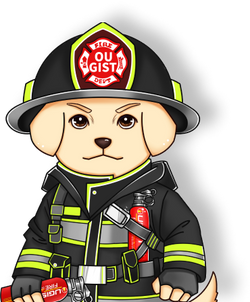Fire safety is of utmost importance in any environment, be it homes, offices, or industrial spaces. Water-based fire extinguishers are one of the most commonly used types of fire extinguishers due to their effectiveness in tackling various types of fires. In this blog, we will explore the different types of water-based fire extinguishers and their applications.
1. Water and Foam Fire Extinguishers: These fire extinguishers contain water or a water-based solution along with a foaming agent like AFFF (Aqueous Film Forming Foam). When discharged, the foam helps to smother the flames and cool down the fire, preventing re-ignition. They are suitable for Class A fires (involving solid materials like wood, paper, textiles) and Class B fires (involving flammable liquids).
2. Water Mist Fire Extinguishers: Water mist extinguishers discharge a fine mist of water droplets, which creates a cooling effect and starves the fire of oxygen. These extinguishers are versatile and can handle Class A, B, C, and F fires (involving cooking oils and fats). They are also safe to use on electrical fires.
3. Water Additive Fire Extinguishers: Water additive extinguishers are a more advanced version of water-based extinguishers. They contain a small amount of water mixed with a special additive. This solution forms a thin film over the burning material, preventing oxygen from reaching the fire and extinguishing it effectively. These extinguishers can handle Class A, B, and F fires.
4. Water Spray Fire Extinguishers: Water spray extinguishers are designed for specific high-risk environments such as chemical storage areas. They discharge water in a fine spray pattern, ensuring the water reaches the fire without spreading any potential hazardous materials. These extinguishers are suitable for Class A and Class B fires.
5. Water-Jacketed Fire Extinguishers: Water-jacketed extinguishers consist of a water-filled outer shell surrounding a fire suppressant agent (e.g., dry powder or foam). When activated, the inner agent is released while the outer shell cools down the fire, preventing re-ignition. These extinguishers are suitable for Class A, B, and C fires.
Important Considerations:
- While water-based extinguishers are effective on Class A fires, they should not be used on flammable liquid fires involving oils, petrol, or electrical fires, as this can be dangerous.
- Always choose the appropriate fire extinguisher based on the potential fire risks in your specific environment.
- Regular maintenance and inspection of fire extinguishers are essential to ensure they are in good working condition.
In conclusion, water-based fire extinguishers come in various types, each designed to tackle specific fire hazards. Understanding the different types and their applications is crucial in ensuring effective fire protection and safeguarding lives and property. Remember, fire safety is a shared responsibility, and proper fire prevention measures and fire extinguisher training can make a significant difference during emergencies.


